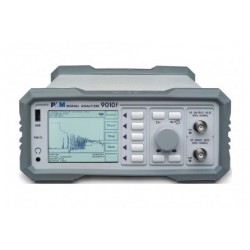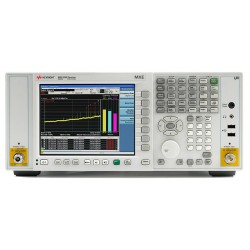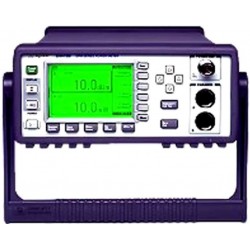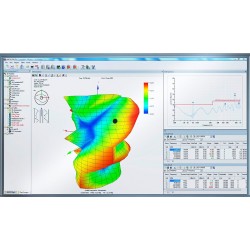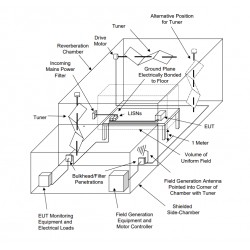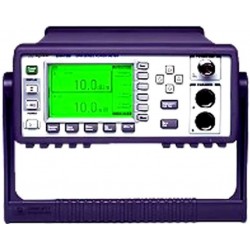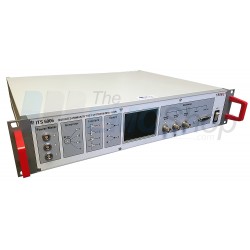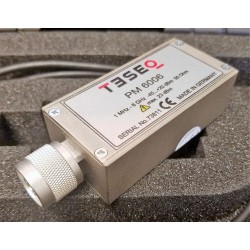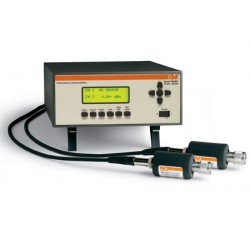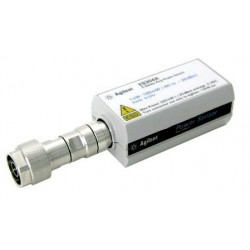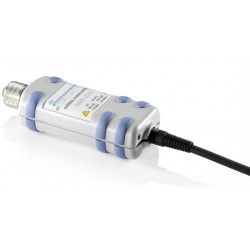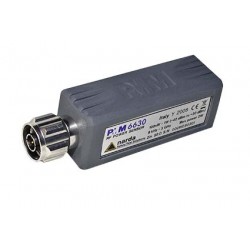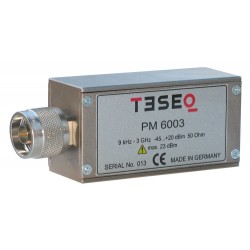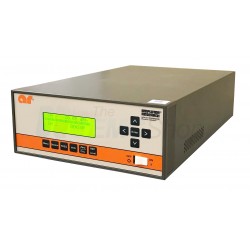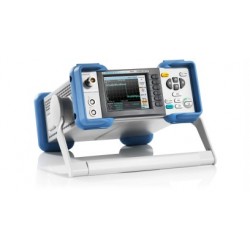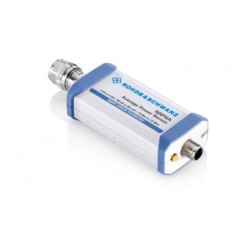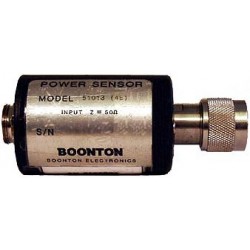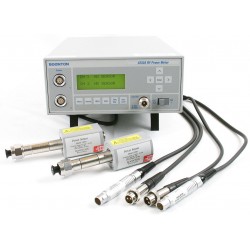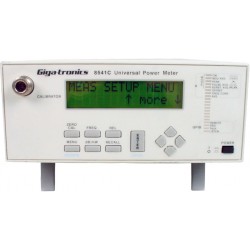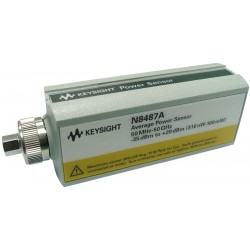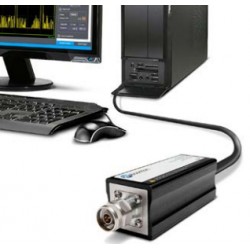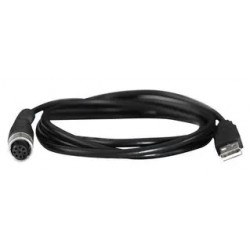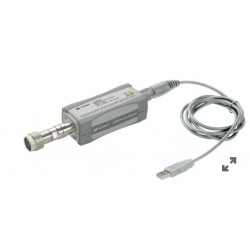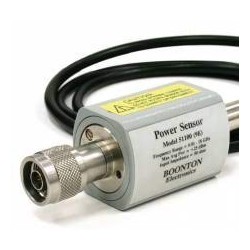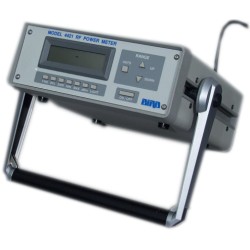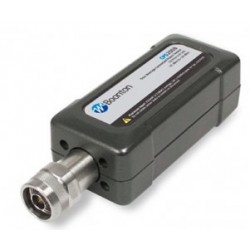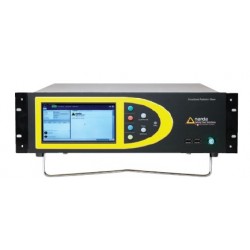No products
Product successfully added to your shopping cart
There are 0 items in your cart. There is 1 item in your cart.
RF Power Meters
- EMC Test Equipment
- Transient Generators
- RF Power Amplifiers
- DC - 300 kHz RF Amplifiers
- 10 kHz - 250 MHz RF Amplifiers
- 10 kHz - 400 MHz RF Amplifiers
- 10 kHz - 1 GHz RF Amplifiers
- 80 MHz - 1 GHz RF Amplifiers
- 1 GHz - 2 GHz RF Amplifiers
- 700 MHz - 4.2 GHz RF Amplifiers
- 1 GHz - 6 GHz RF Amplifiers
- 2 GHz - 8 GHz RF Amplifiers
- 6 GHz - 18 GHz RF Amplifiers
- 18 GHz - 40 GHz RF Amplifiers
- Pulse Amplifiers
- RF Field Strength Probes & Meters
- RF Conducted Immunity
- EMC Receivers/EMI Analyzers
- EMC Antennas
- Coupling Decoupling Networks (CDN's)
- Line Impedance Stabilization Networks (LISN's)
- RF Test Equipment
- EMC Probes
- EMC Measurement & Equipment Software
- Power Supplies
- Electrical Safety Analyzers
- High Precision Laboratory Power Analyzers & Meters
- Anechoic Chambers
- Over-the-Air (OTA) Test Chambers
- EMI RF Shielded Tent Enclosures
- RF Shielded Rooms
- EMC Absorber
- Positioning Equipment
- EMC/EMI Test Setup
- GTEM Cells / TEM Cells
- Reverberation Chambers
- Used RF Anechoic Chambers
- EMC Chamber Filters
- EMC Chamber Shielding Gaskets
- RF Shielded Doors
- Anechoic Chamber Accessories
- Fully Anechoic (FAR) Test Chambers
- Manufacturers
- 3ctest
- AE Techron
- AH Systems
- Amplifier Research
- Boonton
- Com-Power
- Diamond Engineering
- EM Test (Ametek CTS)
- EMC Partner
- EMC Test Design
- Empower High Power RF Amplifiers
- ETS-lindgren
- Log Periodic Dipole Array Antenna
- Near Field Probe Sets
- Double Ridge Horn Antennas
- Biconical Antennas
- Quad Ridge Horn Antennas
- Electric Field Probes
- GTEM's
- Positioners & Tripods
- Loop Antennas
- Biconilog Antennas
- LISN's (Line Impedance Stabilization Network)
- Shielded Enclosures/Rooms
- Monopole Antennas
- Field Generating Antennas
- Fischer Custom Communications
- Haefely Hipotronics
- Haefely EFT/Burst Immunity Test Systems
- Haefely Surge Combination Wave Test Systems
- Haefely Surge Damped Oscillating Wave Test Systems
- Haefely Electrostatic Discharge Test Systems (ESD)
- Haefely Surge Ring Wave Test Systems
- Haefely Surge Telecom Wave Test Systems
- Haefely Magnetic Field Test Systems
- Haefely CDN's (Coupling/Decoupling Networks)
- IFI Amplifiers
- Keysight (Agilent)
- MVG - Microwave Vision Group
- PMM / Narda
- Rohde & Schwarz RF Test Equipment
- Rohde & Schwarz Broadband RF Amplifiers
- Rohde & Schwarz Spectrum Analyzers
- Rohde & Schwarz Compliant EMI Test Receivers
- Rohde & Schwarz Isotropic RF Probes
- Rohde & Schwarz RF Signal Generators
- Rohde & Schwarz RF Switches
- Rohde & Schwarz Oscilloscopes
- Rohde & Schwarz RF Power Meters
- Rohde & Schwarz RF Power Sensors
- Schloder
- Schwarzbeck Mess-Elektronik
- Schwarzbeck Antennas
- Schwarzbeck Automotive Antennas
- Schwarzbeck Broadband Horn Antennas
- Schwarzbeck Biconical Antennas
- Schwarzbeck Logarithmic Periodic Broadband Antennas
- Schwarzbeck Stacked Log-Periodic Broadband Antennas
- Schwarzbeck Biconic Log-Periodic Antennas
- Schwarzbeck Dipole Antennas
- Schwarzbeck Rod Antennas
- Schwarbeck Antenna Baluns / Holders
- Schwarzbeck LISN Line Impedance Stabilisation Networks
- Schwarbeck Decoupling & Absorbing Clamps
- Schwarzbeck Field Probes
- Schwarzbeck Helmholtz Coils
- Schwarzbeck Antenna Masts
- Schwarzbeck Coupling/Decoupling Networks
- Schwarzbeck Antennas
- Solar Electronics
- Teseq (Schaffner)
- Teseq Automotive Transient Generators
- Teseq RF Test Equipment
- Teseq EFT/Burst Generators
- Teseq RF Immunity Generators
- Teseq ESD Guns
- Teseq Surge Generators
- Teseq Harmonics & Flicker Solutions
- Teseq Dips, Interrupts & Variations Equipment
- Teseq Ring Wave Generators
- Teseq Oscillatory Waves Generators
- Teseq Absorbing Clamps / Ferrite Tube
- Teseq EMC Antennas
- Teseq Current Probes
- Teseq Coupling Networks
- Thermo Keytek
- Vicreate
- Compliance Standards
- International (IEC/EN)
- EN/IEC 61000-3-2
- EN/IEC 61000-3-3
- IEC 61000-3-11
- IEC / EN 610000-3-12
- EN/IEC 61000-4-2
- EN/IEC 61000-4-3
- EN/IEC 61000-4-4
- EN/IEC 61000-4-5
- EN/IEC 61000-4-6
- EN/IEC 61000-4-7
- EN/IEC 61000-4-8
- EN/IEC 61000-4-9
- EN/IEC 61000-4-10
- EN/IEC 61000-4-11
- EN/IEC 61000-4-12
- EN/IEC 61000-4-16
- EN/IEC 61000-4-18
- EN/IEC 61000-4-19
- EN/IEC 61000-4-20
- EN/IEC 61000-4-21
- EN/IEC 61000-4-29
- EN/IEC 61000-4-31
- IEC 61000-4-39
- EN/IEC 62132
- SEMI F47 Voltage Sag Immunity
- Product Standards
- Military & Aerospace Standards
- Automotive EMC Standards
- CISPR Standards
- Telecom Testing
- ANSI/IEEE Standards
- FCC Part 15
- FCC Part 30
- International (IEC/EN)
- Application/Test Type
- Radiated Immunity
- Bulk Current Injection Testing
- RF Emissions Testing
- Conducted Immunity
- Conducted Emissions
- Antenna Pattern Measurement
- CE Mark Testing
- Intentional Radiator Testing
- Pulsed HIRF Radar
- Over-the-Air (OTA) Testing
- 5G Test Solutions
- Automotive EMC
- SAR Measurement Equipment
- Radiated Emissions
- Battery Simulator Test Equipment
- Services
- Clearance
Viewed products
-

Monthly Rental:...
Rentals Ship Same Day Include NIST...
-

Narda Broadband...
Rent Narda NBM-520 Kit New - Old...
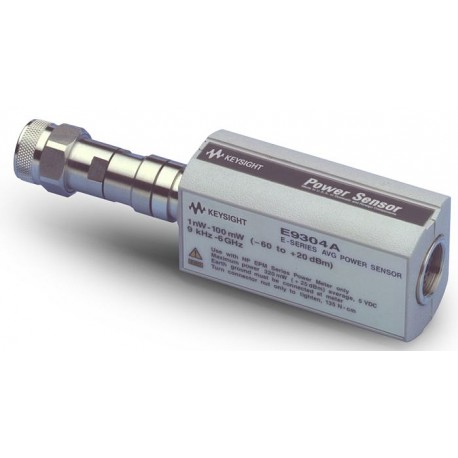 View larger
View larger Monthly Rental: Keysight / Agilent E9300A 10MHz to 18GHz 20dBm Average Power Sensor
New
- Rentals Ship Same Day
- Include NIST Calibration and Interconnect Cable
- Measure the average power of all modulation formats
- Wide dynamic range (-60 dBm to +20 dBm) and frequency range 10 MHz to 18 GHz
- High maximum power specification
- Low SWR for reducing mismatch uncertainty
- Calibration factors, linearity and temperature compensation data stored in EEPROM
- Fast measurement speeds (up to 400 readings per second with the E4416A)
- Compatible with EPM (new N1913A/ 14A, E4418B/ 19B), EPM-P (E4416A/ 17A) and P-series (N1911A/ 12A) power meters
In Stock
Test Equipment Description
Keysight / Agilent E9300A 10MHz to 18GHz 20dBm Average Power Sensor
The Agilent E9300A wide dynamic range, 10 MHz to 18 GHz, average power sensor is designed for use with the EPM and EPM-P series power meters for measurements on all types of modulated signals, from complex digital modulation formats, such as W-CDMA, CDMA (IS-95), TDMA and OFDM, to multi-tone and CW signals. Also, for comprehensive error correction, the sensor's calibration factors, linearity and temperature compensation data are stored in EEPROM. The sensor's power measurements are traceable to the U.S. National Institute of Standards and Technology (NIST).
Wide dynamic range. Multiple modulation formats. One sensor.
 Whether you design, manufacture, or maintain RF and microwave communication equipment, you know the importance of making accurate average power measurements. With communications moving to higher modulation bandwidths and new types of signal format, you may find yourself buying multiple sensors to cover the varying power and bandwidth requirements of each modulation format.
Whether you design, manufacture, or maintain RF and microwave communication equipment, you know the importance of making accurate average power measurements. With communications moving to higher modulation bandwidths and new types of signal format, you may find yourself buying multiple sensors to cover the varying power and bandwidth requirements of each modulation format.
The Agilent Technologies E-series E9300 power sensors simplify your measurement equipment requirement and save you time and money, as well. Used with the Agilent E4418 (single-channel) and E4419 (dual-channel) EPM series power meters, these new sensors can measure the average power of RF and microwave signals, regardless of the modulation format, over a wide 80 dB dynamic range (sensor dependent).
 Now you can use a single power sensor to measure complex digital modulation formats—including those used in today’s wireless communication, satellite, and cable TV systems—at both low and high power levels. The same E-series power sensor also measures multi-tone and continuous-wave (CW) signals.
Now you can use a single power sensor to measure complex digital modulation formats—including those used in today’s wireless communication, satellite, and cable TV systems—at both low and high power levels. The same E-series power sensor also measures multi-tone and continuous-wave (CW) signals.
A special option E9304A1 is available to cover the frequency range 9 kHz to 18 GHz (E9304A special option H18). Measurements are fast—up to 200 readings per second—accurate, and repeatable.
E9300 power sensors are bandwidth independent, so you do not have to worry about matching sensor bandwidth to the modulation format of your signal under test. Simply connect the power sensor to the test signal and begin measuring.
With all this capability, you can standardize on one power sensor for all of your average power measurement applications, eliminating the need to change sensors during measurement tasks and minimizing the cost of equipment.
Ideal for all your applications
- R&D and manufacturing of RF and microwave components for satellite, wireless, and terrestrial communication systems
- High-volume, automated functional test of mobile phones, cable TV and video components, consumer electronics and automotive manufacturing
- EMC measurements to CISPR2 requirements (E9304A)
- Maintenance and repair of radio links for terrestrial and satellite communications from VLF to microwave, cable TV head-ends and broadcast TV transmitters
- Aerospace and defense R&D manufacturing, and service
1. The E9304A sensor is DC coupled and has a 5 V DC damage level. All other E9300 sensors are AC coupled and have a 20 V DC damage level specification.
2. Comite International Special des Perturbations Radioelectriques

Agilent E9300 Sensors measure the average power of any signal format.
Designed For Accuracy
The Agilent E-series E9300 power sensors employ a patented, diode-attenuator-diode topology that ensures the accuracy and repeatability of measurements across the sensors’ full -60 to +20 dBm dynamic range. This technique has the advantage of always using diodes in their square-law region, where the output current and voltages respond accurately to different modulation formats.
Each E9300 sensor has two measurements paths, one for high power between -10 and +20 dBm and one for lower power between -60 and -10 dBm. The sensor switches between power ranges quickly and automatically, thus providing the benefit of two power sensors in one.

Simplified Block Diagram of Diode-Attenuator-Diode Topology
(power levels for “A” suffix sensors)
High-Power Measurement of Signals with Large Crest Factors
With a high maximum power specification of +25 dBm and peak power of +33 dBm (<10 microseconds duration), the E9300 sensors can handle the large crest factors typical of the newest signal modulation formats, such as orthogonal-frequencydivision multiplexing (OFDM) and wideband CDMA, whilst maximizing the dynamic range.
Flat Calibration Fctors
Amplifier intermodulation distortion measurements usually employ two-tone or multi-tone test signals. These test signals may be hundreds of MHz apart, which poses a problem because you must choose a single calibration factor point. The E9300 power sensors have exceptionally flat calibration factors across their entire frequency range, which allows you to select an appropriate calibration factor for your measurement, even when the test signals used are widely spaced in frequency.

| 
|
Low Measurement Uncertainty
In power measurement, the largest errors are often caused by sensor and source mismatch. The E-series E9300 power sensors provide exceptionally low standing-wave-ratio (SWR). For example, SWR is 1.15 from 10 MHz to 2 GHz over 25 ± 100C. Low SWR means that mismatch uncertainty has been minimized and measurement accuracy improved.
Another common source of error during power measurement is due to harmonics of the signal that is intended to be measured. Previous wide dynamic range sensors incurred up to +/-0.9 dB error when measuring signals with harmonics as low as -20 dBc. The E9300 power sensors give the average power level for all of the signals input to it, no matter their in-band harmonic content. Another form of harmonic error in diode based power measurements is when harmonics are generated by high power signals incident on the sensor, and these signals can then be reflected back to the device under test. The design of the E9300 power sensors results in low harmonic generation when compared to other wide dynamic range sensors in use today. This design minimizes stray-signal reflections and helps ensure the accuracy of high power measurements.
The E-series E9300 power sensors work with the Agilent EPM-series E4418 single-channel and E4419 dual-channel power meters. These meters provide accurate and repeatable power measurements, fast measurement speeds, and an easy-touse interface for many power applications. “B” versions of these power meters offer RS-232 and RS422 serial interfaces for PC connectivity and an internal, rechargeable battery option for field use. The EPM series power meters come with a standard 1-year global warranty.


